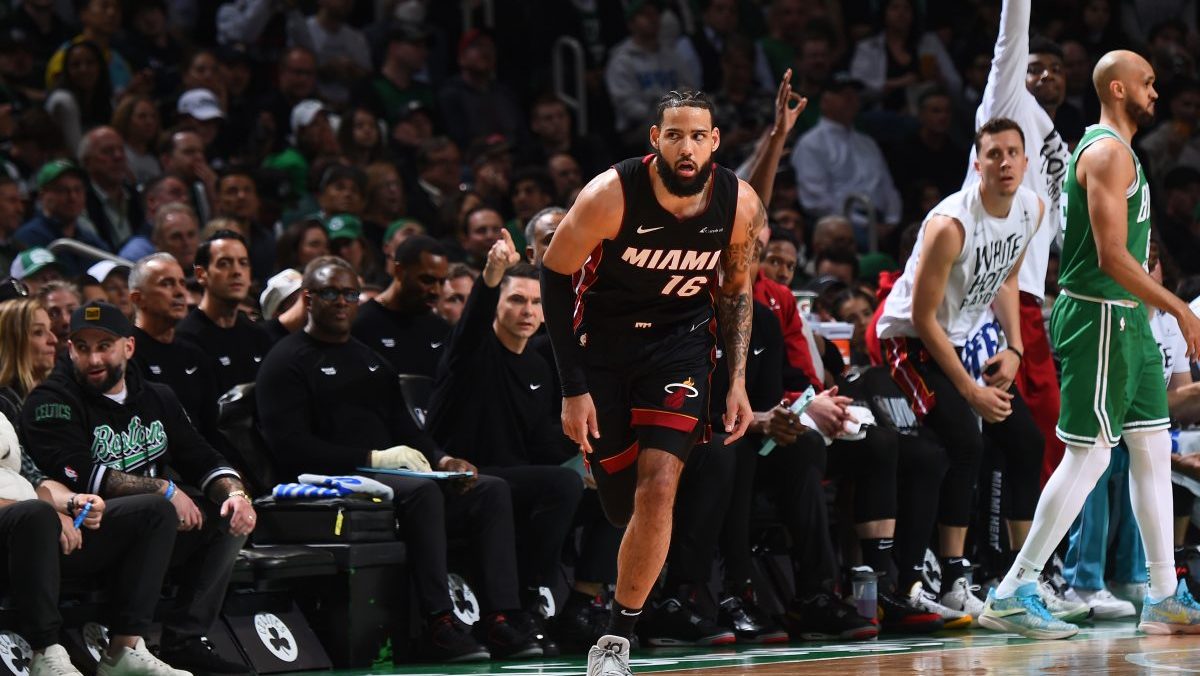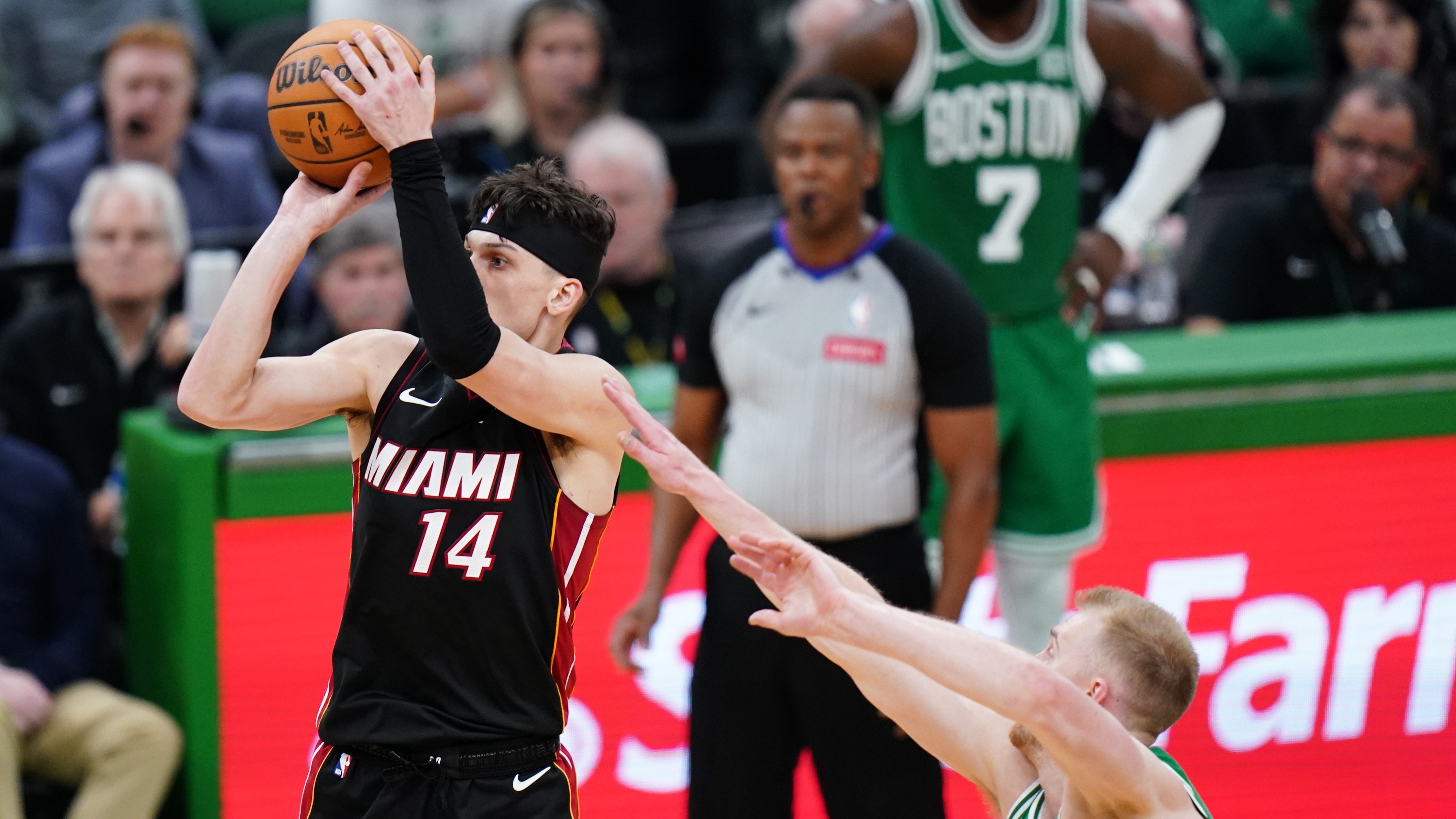When you play beneath 17 championship banners and your team has been knocking on the door of the title round in three of the past four years, there’s seemingly little beyond a trip to the Finals that would constitute a successful season for the Boston Celtics.
But while Boston's 2020-21 campaign will be judged largely on the length of its postseason jaunt, we’d submit that the season should ultimately be graded in three distinct parts.
Celtics Talk Podcast: Exclusive 1-on-1 with Tristan Thompson | Listen & subscribe | Watch on YouTube
Stay in the game with the latest updates on your beloved Boston sports teams! Sign up here for our All Access Daily newsletter.
Here’s how Boston can ace each of them:
PART 1: PLAYER/ASSET DEVELOPMENT, CHEMISTRY BUILDING
With Kemba Walker, Romeo Langford, and, potentially, Tristan Thompson sidelined for the start of the regular season, the Celtics’ earliest goals should focus on developing and evaluating young talent.
Boston Celtics
Nearly half of the Celtics’ 17-man roster consists of players drafted over the past three years. Beyond maybe second-year forward Grant Williams, none of those other players have definitive rotation roles. It’s imperative that Boston figure out what they’ve got in their youngest players, both in order to supplement an expensive core but also to have tradable assets for the second part of the season plan.
Jaylen Brown’s rookie extension kicks in this season. Jayson Tatum’s max-contract extension follows next year. Boston has roughly $104 million committed to Brown, Tatum, Kemba Walker and Marcus Smart next year with a cap that could be in the range of $112 million. Boston desperately needs young, cost-controlled talent to pair around them.
Boston has to figure out if Robert Williams can be a part of this core. When healthy, can Langford be a starter-level talent? Can 2020 first-rounders Aaron Nesmith and Payton Pritchard get tossed into the fire despite no summer league and an abbreviated camp? There’s going to be opportunities early in the year and players like Carsen Edwards and Tremont Waters need to take advantage of them, too.
Forsberg: Which young Celtics are most likely to step up in 2020-21?
As Walker and Thompson return to the court, the team can start building chemistry among its core players. There will be some lumps early but the Celtics may have to sacrifice wins and seeding at the expense of development and bringing important pieces like Walker along slowly to ensure maximum health at the finish line of the season.
A successful Part 1 would see at least three players — the Williams duo and Langford the most important of the candidates — emerge as rotation players with Nesmith and Pritchard at least pushing for floor time. If any of the other recent draftees are simply considered desirable assets in trade discussions, that’s a win for Boston.
PART II: ROSTER DECISIONS, MAXIMIZING THE HAYWARD TPE
The trade deadline is expected to land in late March, allowing the Celtics to navigate the entire 38-game first half of the season before really having to make tough decisions about the roster.
The Celtics will have a better sense at that point where the roster stands. Is Walker healthy enough to be his All-Star self by the postseason, and is veteran Jeff Teague capable of holding down the backup point guard spot? How does Thompson look alongside the core and how do the Williamses fit into the big-man rotation?
With Daniel Theis in the final year of his contract and the team seemingly hard pressed to re-sign him at even modest money next offseason, the Celtics may have to consider trade options, though he could be an indispensable part of the big-man rotation by this point if he builds off his play from last season. The team can cross that bridge in the offseason if it needs to.
Most importantly, the Celtics need to decide at this juncture if there’s a move to best utilize the $28.5 million traded player exception generated from delivering Gordon Hayward to the Charlotte Hornets.
Forsberg: Realistic ways C's could use Hayward TPE
With Tatum’s extension kicking in after the season, the team could struggle to utilize the full value of the TPE during the 2021 offseason. It’s not impossible but certainly cumbersome. It won’t be easy in-season this year, either, because the team is hard-capped from using the full value of the non-taxpayer midlevel to land Thompson. But with enough outgoing salary, the team could still take back a large contract if there was a player available who could help them this season and beyond.
Remember, too, the Celtics do not have to utilize the full value of the exception and can split it into smaller chunks. Maybe the Magic are out of contention and someone like Aaron Gordon is available. Maybe the Kings are eager to shed salary and Harrison Barnes is on the market. These are bigger splashes but the team can also make smaller waves for players that can simply fill the gaps on the roster — all without having to sacrifice core players in any deals.
A smaller move would leave a sizable chunk to play with after the season. Again, those decisions could hinge on need. But it seems imperative that Boston utilizes at least a portion of TPE to strengthen the roster as the focus shifts to ramping up for the postseason.
A successful Part II sees Boston utilize a healthy chunk of the TPE to bolster the roster by adding an impact talent that can both aid the stretch run and be a part of the core for at least one or two more seasons.
PART III: THE PLAYOFF RUN
Having prioritized health, chemistry, and long-term roster construction, the Celtics can safely shift gears during the second half of the year. This is when seeding comes into focus, as does a desire to start playing the team's best basketball in advance of the postseason.
If all has gone well, Walker and Thompson are healthy, and some younger players have emerged as rotation-caliber contributors. Other young talent likely has been moved as part of roster tweaking and the Celtics have an eight- or nine-man core they are set to lean heavily on in the postseason.
Forsberg: Are the Celtics still elite in loaded Eastern Conference?
So much of what happens from here hinges on the strength of the East and the progress of Boston’s core. Has Tatum built off his All-NBA vault of last season? Has Brown earned his first All-Star nod?
Maybe it’s still a Finals-or-bust mentality at this point. Maybe an in-season injury has forced us all to reconsider what the notion of a successful season is for Boston and the focus has shifted a bit to the long-term future.
A successful Part III hinges on Boston maximizing the first two trimesters. If they do, they’d have a roster built for a championship push.
Based on the success of recent seasons, anything less than a trip to the Finals would seem like a letdown. But simply returning to the championship round would mean the team has gotten over the recent hump and continues to progress under the Tatum/Brown core.


